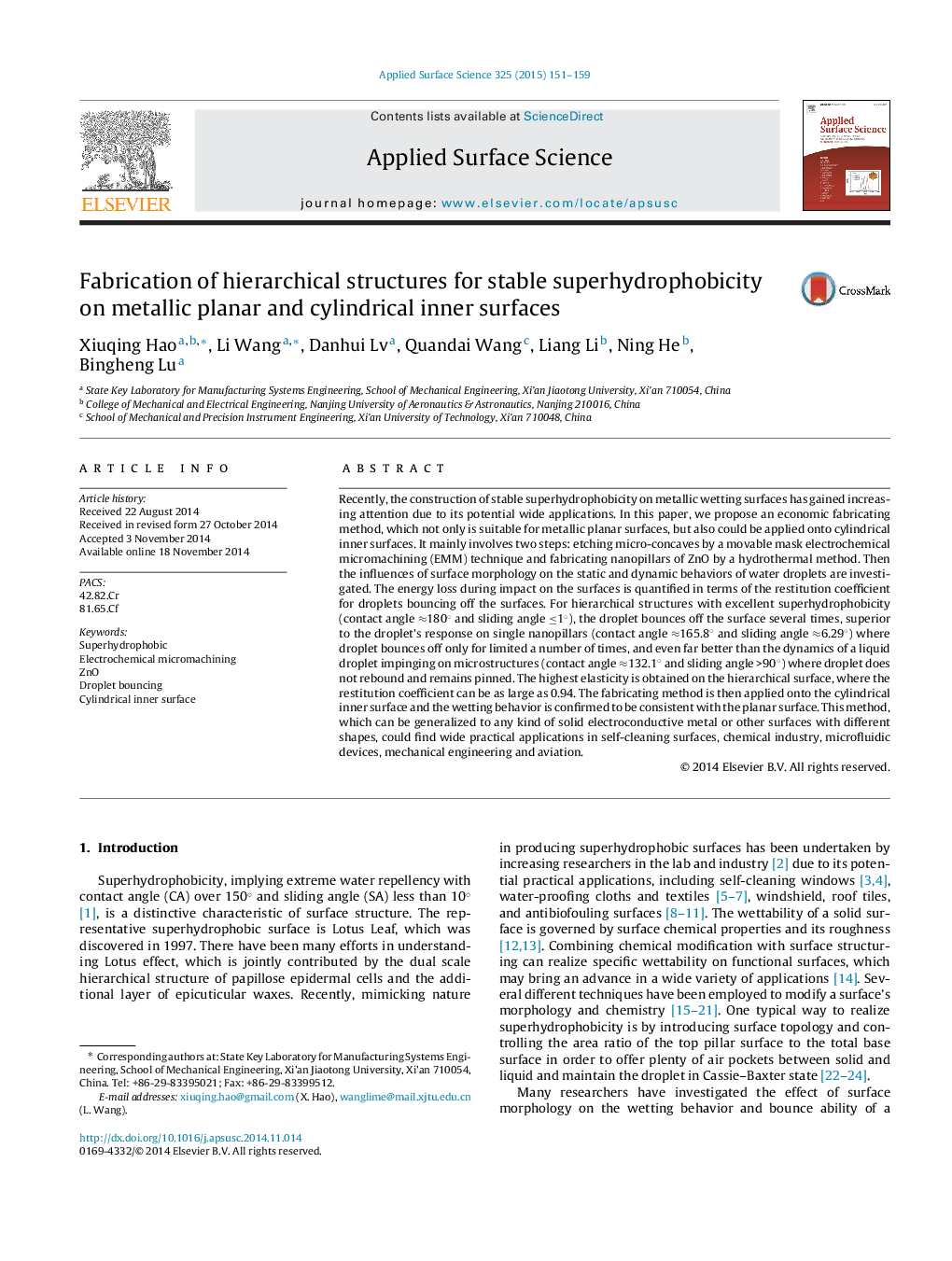| Article ID | Journal | Published Year | Pages | File Type |
|---|---|---|---|---|
| 5357742 | Applied Surface Science | 2015 | 9 Pages |
Abstract
Recently, the construction of stable superhydrophobicity on metallic wetting surfaces has gained increasing attention due to its potential wide applications. In this paper, we propose an economic fabricating method, which not only is suitable for metallic planar surfaces, but also could be applied onto cylindrical inner surfaces. It mainly involves two steps: etching micro-concaves by a movable mask electrochemical micromachining (EMM) technique and fabricating nanopillars of ZnO by a hydrothermal method. Then the influences of surface morphology on the static and dynamic behaviors of water droplets are investigated. The energy loss during impact on the surfaces is quantified in terms of the restitution coefficient for droplets bouncing off the surfaces. For hierarchical structures with excellent superhydrophobicity (contact angle â180° and sliding angle â¤1°), the droplet bounces off the surface several times, superior to the droplet's response on single nanopillars (contact angle â165.8° and sliding angle â6.29°) where droplet bounces off only for limited a number of times, and even far better than the dynamics of a liquid droplet impinging on microstructures (contact angle â132.1° and sliding angle >90°) where droplet does not rebound and remains pinned. The highest elasticity is obtained on the hierarchical surface, where the restitution coefficient can be as large as 0.94. The fabricating method is then applied onto the cylindrical inner surface and the wetting behavior is confirmed to be consistent with the planar surface. This method, which can be generalized to any kind of solid electroconductive metal or other surfaces with different shapes, could find wide practical applications in self-cleaning surfaces, chemical industry, microfluidic devices, mechanical engineering and aviation.
Related Topics
Physical Sciences and Engineering
Chemistry
Physical and Theoretical Chemistry
Authors
Xiuqing Hao, Li Wang, Danhui Lv, Quandai Wang, Liang Li, Ning He, Bingheng Lu,
